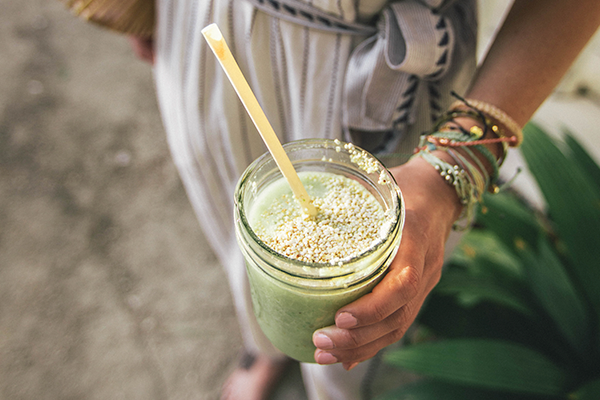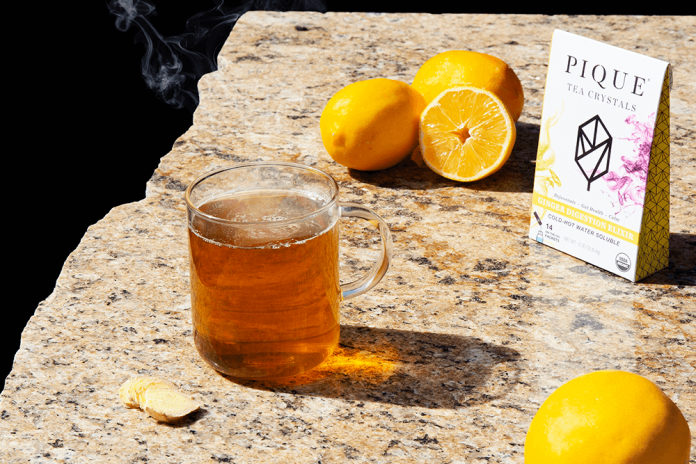Green Juice
Red Wine
“Gluten-free” snacks
Granola
Veggie/Whole-Wheat Pasta
Whole Wheat Bread
Instant Oatmeal
Veggie Burgers
Protein Bars
Flavored or “Light” Yogurt
Kombucha
With all the contradicting nutrition information out there – and a slew of misleading marketing messages – healthy eating can be harder than you might expect!
Even worse, some of our go-to “health” foods may not be healthy at all. It seems crazy, but it’s true.
So how can you make sure you’re not unwittingly eating things that aren’t so great?
We’ve got a list of the top 11 “health” foods that you might want to steer clear of… plus, what to eat instead:
Green Juice
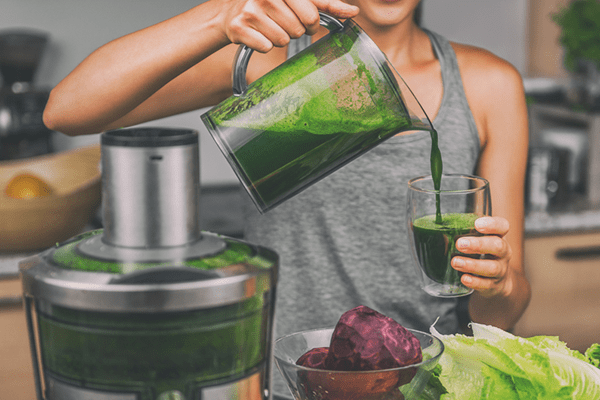
Green juice can be a powerhouse of vitamins and antioxidants. It can also be a sugar bomb.
Many green juices are made with a lot of fruit juice, which is concentrated sugar. One 8 ounce glass of apple juice, for example, contains 24 grams of sugar, versus 15 grams in one whole fruit.
When you juice fruits and vegetables, you remove the pulp, which is also the beneficial fiber. Fiber helps control blood sugar. It also supports gut health and makes you feel full. This is why you can drink a green juice made with 2 heads of kale and 3 whole fruits, but you would never eat that much of the whole foods in one sitting.
A better choice: Make a green smoothie using whole vegetables and fruit, with water or unsweetened nut milk as a lower-sugar base. Even better, opt for a green salad.
Red Wine

The health benefits of red wine are mainly linked to its high resveratrol content. Resveratrol is an antioxidant with powerful effects on age-related diseases. People who drink moderate amounts of red wine seem to have a lower risk of heart disease and there is even evidence that it can increase lifespan. (1)
But all wine is not created equal.
Most of the wines on grocery store shelves harbor a long list of toxins, from agricultural pesticides to added sulfites, food dyes, sugars, and preservatives. And wine producers aren’t required to disclose what is actually in each bottle. So, what you assume to be a simple glass of fermented grape juice may contain up to 60 government-approved additives. (2)
A recent study of popular U.S. beers and wines found Glyphosate (the active chemical in RoundUp weedkiller) in 19 out of the 20 samples tested. (3) The popular wine, Sutter Home, contained 51 parts per billion. (4) Scientists have found that levels as low as 1 part per trillion have the potential to stimulate the growth of breast cancer cells and disrupt the endocrine system. (5,6)
A better choice: If you enjoy drinking wine, go for organic, small-batch wines which are less likely to be contaminated with pesticides and additives. Otherwise, skip the wine altogether and get your antioxidant health benefits from a colorful array of fresh fruits and vegetables.
“Gluten-free” Snacks
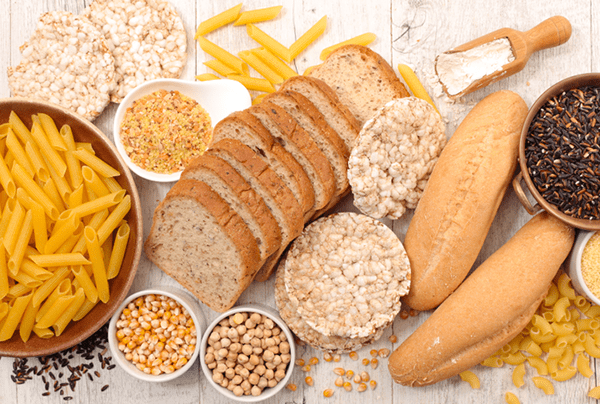
You may have heard the buzz about gluten–how it may contribute to “leaky gut”, brain fog, and inflammation in some people. Maybe you’ve learned that you are gluten intolerant or gluten sensitive. Or perhaps you just see “gluten-free” products everywhere and assume these must be healthier than their gluten-full counterparts.
Limiting or avoiding gluten certainly has its health benefits, but “gluten-free” junk foods are still junk foods! Most of these processed snacks are just as high in calories, sodium, added sugar, and unhealthy fats as any other processed food.
Plus, the gluten-free flours used in these packaged snack foods are often refined (stripped of fiber and nutrient value), just like white flour. Without the fiber to slow digestion, they spike blood sugar which leads to mood swings, sugar cravings, and weight gain.
A better choice: Naturally gluten-free (unprocessed), whole foods like fruit, nuts and seeds, vegetables, quinoa, and brown rice.
Granola
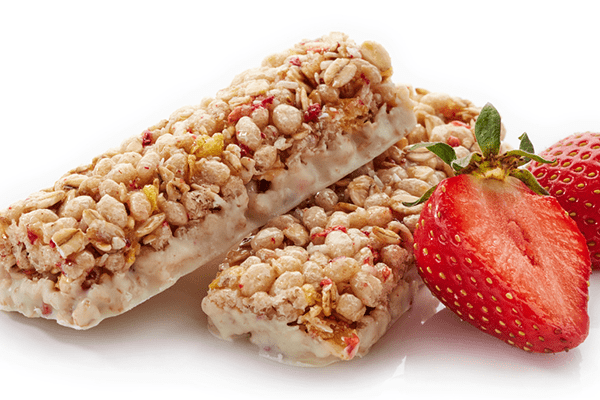
Swapping highly refined grain cereals for whole-grain granola seems like a healthy choice.
But when you read the labels on packaged granolas, you’ll see that many of them contain tons of added sugar–as much as 24 grams of sugar per cup. That’s about the same as a Snickers bar!
Packaged granola is usually made with low-quality, inflammatory oils, like Canola oil. It can also contain added preservatives, flavorings, and other unhealthy additives.
A better choice: Bake your own granola with rolled oats, nuts, seeds, and cold-pressed coconut oil, then mix in some dried fruit for sweetness. Another great whole-grain, low-sugar breakfast is steel-cut oatmeal topped with nuts and fresh blueberries.
Veggie/Whole Wheat Pasta
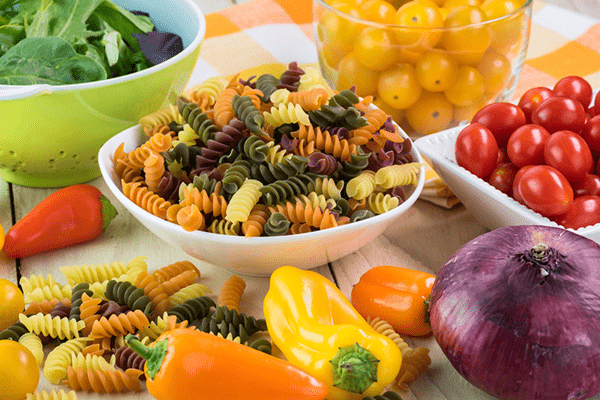
The more vegetables the better, right? So add them to pasta and, voila!, healthy Carbonara!
Not quite.
Boxed veggie pasta is basically just white pasta with added vegetable-based food coloring. The nutritional difference between it and regular pasta is insignificant. And veggie pasta doesn’t have a lower glycemic index either, which would make it less harmful to your blood sugar, and waistline.
What about whole wheat pasta? Whole grains are an excellent source of fiber, plant-based protein, vitamins, minerals, and phytochemicals.
Whole wheat pasta is certainly higher in fiber and micronutrients than nutritionally-void white pasta. However, to make whole wheat pasta, whole grains are essentially pulverized into flour, which diminishes most of the beneficial effects of consuming actual “whole” grains.
A better choice: Actual veggie “pasta,” like spaghetti squash or spiralized veggies, and actual whole grains like brown rice.
Whole Wheat Bread
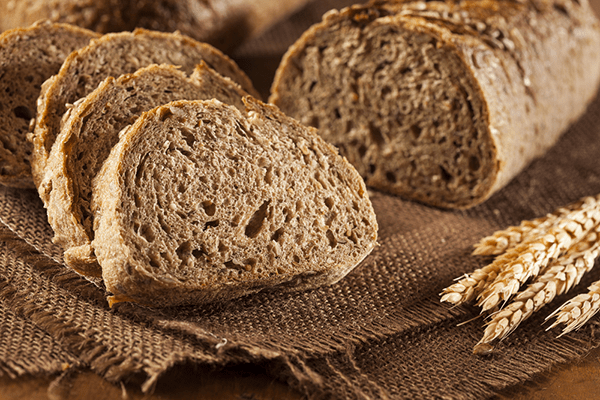
To improve the nutritional value of our trusty lunchtime staple, the sandwich, we often opt for whole wheat bread. Unfortunately, many “whole wheat” sandwich bread is made predominantly of refined white flour, with some added whole wheat flour. So you may only get a nominal amount of beneficial fiber and nutrients.
Whole wheat bread often contains added sugars, too (brown sugar, molasses, rice syrup). Pulverized flour–whole wheat or not–is high enough on the glycemic index, your blood sugar certainly doesn’t need the added insult of more sugar.
Most commercial whole wheat bread is made with unsprouted wheat flour, which can be high in phytic acid. Often called an “anti-nutrient,” phytic acid binds to minerals like calcium, zinc, and iron, which can promote mineral deficiencies. (7)
Then there’s the issue of gluten. Whole wheat is still wheat, a gluten-containing grain. More and more people are avoiding gluten for health reasons, especially those with autoimmune conditions or inflammatory digestive issues like Crohn’s.
A better choice: If you can tolerate gluten, opt for sprouted, whole grain bread. Be sure to read the labels and avoid the ones made with white flour and added sweeteners.
Instant Oatmeal

Oatmeal has been the gold standard for a heart-healthy breakfast since it got the American Heart Association’s stamp of approval in 1997.
Oats are low in saturated fat and cholesterol while high in omega 3 fatty acids, fiber and important minerals like manganese, phosphorus, and magnesium. Eating whole grain oats has been shown to control blood sugar, reduce the amount of fats in the blood, and promote weight loss in people with Type 2 Diabetes. (8)
Instant oatmeal, however, is heavily processed and stripped of much of its fiber content. This is why it cooks so fast. This is also why it has a much higher glycemic index (66) than steel-cut oats (42).
Instant oatmeals are often flavored, too–think “maple brown sugar” or “strawberries and cream.” These are swimming in added sugar (on top of the already high-glycemic index) and often contain fillers like white flour.
A better choice: Stick with whole-grain oatmeal (steel-cut or rolled oats). If you’re crunched for time in the morning, overnight oats are a great solution!
Veggie Burgers
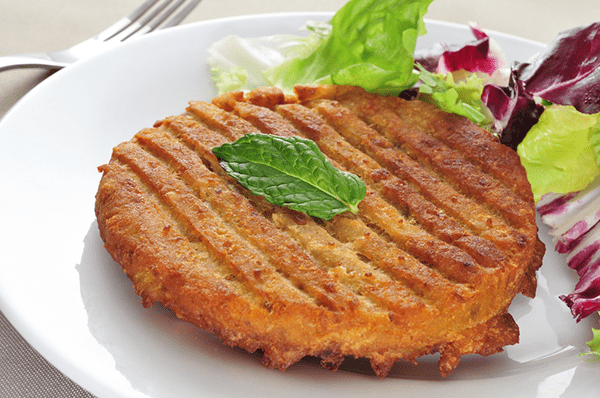
Veggie burgers (and imitation meat products) are an example of how “plant-based” is not necessarily “better.”
Many veggie burgers contain highly processed, genetically modified (GMO) soy protein, partially hydrogenated oils (like Canola), and other unhealthy additives, fillers, colorings, and preservatives.
A better choice: Stick with whole-food plant protein sources (beans, lentils, eggs, dairy, non-GMO fermented soy, nuts, and seeds) or pasture-raised/grass-fed, organic meats.
Protein Bars

Protein is a key component of a healthy diet. Our bodies need it to build and repair muscles, bones, and cartilage. Protein bars, however, are hardly health food.
Like other processed foods, most protein bars are full of added sugars (corn syrup, brown rice syrup, cane syrup), unhealthy fats (fractionated palm kernel oil, high oleic safflower oil, sunflower oil), and artificial flavors.
They are often made with highly processed protein sources, like GMO soy protein isolate, or dairy-derived whey and calcium caseinate. Casein has been linked to inflammation and digestive upset, especially for people who are lactose intolerant. (9)
And don’t be fooled by labels like “0g of sugar!” They just replace sugar with artificial sweeteners or sugar alcohols, which can cause sugar cravings, long term weight gain, and digestive upset.
A better choice: Whole-food protein sources (a hard-boiled egg or a handful of nuts) or clean-label protein bars (only containing natural ingredients you know and can pronounce).
Flavored or “Light” Yogurt

A quintessential health food, yogurt is high in protein, probiotics, calcium, and vitamin D.
If you read the labels, though, you’ll see that most flavored yogurts have as much added sugar as a serving of ice cream! They also contain unnecessary colorings and additives.
The “light” yogurts–low in fat, sugar, carbs, and/or calories–have simply replaced the natural dairy fat and added sugars with artificial sweeteners or sugar alcohols. Highly sweet but with less satiating fat and protein, light yogurt doesn’t satisfy hunger and can lead to sugar cravings and overeating.
A better choice: Go for plain greek yogurt and dress it up with your own toppings like fresh fruit, cinnamon, and vanilla.
Kombucha
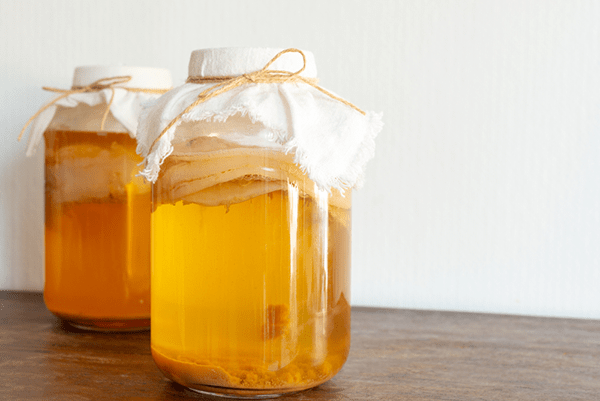
This fermented tea is rich in beneficial bacteria. But is it all it’s cracked up to be?
Kombucha is made mostly with yeast and sugar–this is what feeds the bacteria during the fermentation process. A lot of brands also add sugar to the final product to make it more palatable for people who don’t like the vinegar-y taste of fermented tea.
Many people suffer from something called candida (yeast) overgrowth. Consuming more yeast (and a bunch of candida-feeding sugar) can actually make this condition worse.
A better choice: Naturally fermented (and no-sugar-added) vegetables like sauerkraut, pickles, and kimchi are great sources of gut-healthy probiotics.
